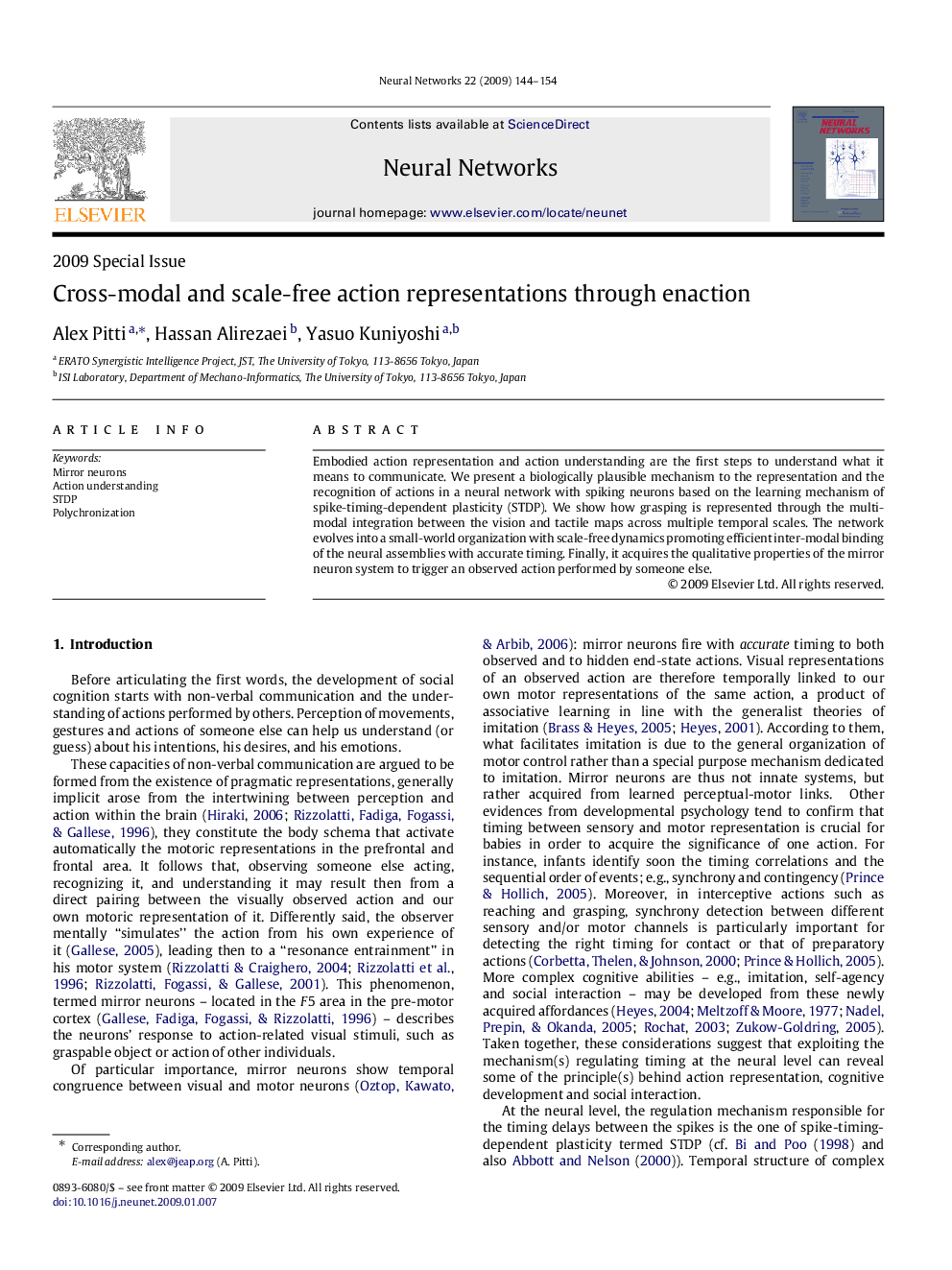| Article ID | Journal | Published Year | Pages | File Type |
|---|---|---|---|---|
| 405629 | Neural Networks | 2009 | 11 Pages |
Embodied action representation and action understanding are the first steps to understand what it means to communicate. We present a biologically plausible mechanism to the representation and the recognition of actions in a neural network with spiking neurons based on the learning mechanism of spike-timing-dependent plasticity (STDP). We show how grasping is represented through the multi-modal integration between the vision and tactile maps across multiple temporal scales. The network evolves into a small-world organization with scale-free dynamics promoting efficient inter-modal binding of the neural assemblies with accurate timing. Finally, it acquires the qualitative properties of the mirror neuron system to trigger an observed action performed by someone else.
